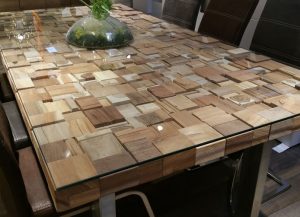Glass & glazing Blog
Need a Kitchen Splashback? Choose Glass.
Kitchen Splashback? Whether a full or partial refit of a home’s kitchen is in the cards, adding or replacing a splashback is always a topic of conversation. Praised for their functionality and look, splashbacks fulfill both functional and aesthetic desires. As splashbacks can be custom cut to fit a space, opting for a splashback during refit is an easy choice as they can be made to fit the area.
Splashbacks have become popular in recent years due to their utility and design — they make stain cleaning easier, guard against steam and splashes, and look beautiful. With this increase in popularity, many different types of materials have been manufactured into splashbacks. Granite, steel, ceramic tiling… the list goes on. Many of these materials are chosen to fit a certain design scheme, but there are some materials that are better than others.
Two of the most popular choices, glass and acrylic, are both common choices due to their versatility and durability. Splashbacks are meant to last for the lifetime of the kitchen, so be sure that whatever the choice of material is, it will stand up to daily life in the kitchen. Using acrylic as a splashback does have some benefits – it looks like glass, is lightweight and easy to cut to fit, is available in many colours and textures, and is easy to clean. There are some drawbacks as well. Acrylic can mark easily; cuts and nicks will be visible. It also cannot stand up to heat like glass can. It needs to be separated from any source of heat by at least 9 centimeters. Otherwise, the heat exposure can cause the material to warp and melt. This means that it is also may not suitable for other design features, like having lighting near or embedded in it. Caution is required around acrylic, as heat that emits from cooking areas can also damage the acrylic. Due to its lack of resiliency against heat, acrylic can be an especially poor choice, depending on the setup of other fixtures in the kitchen.
Though glass is heavier, it shares many of the other benefits of acrylic, and it doesn’t have the same drawbacks. Glass can be painted or printed upon to create a customized splashback that suits the kitchen perfectly. As it’s a harder material, it’s more difficult to damage. It is also heat-resistant, making it suitable to be in any area of the kitchen, even near a heat source. With the non-porous properties of the material, once the surface is clean, it’s cleaned. There’s no place for any grime to gather, or bacteria to grow.
It is also recommended that for custom cuts, that glass is cut by a professional. Glass can still fit in odd nooks and curved areas, like acrylic can, but the fragility of the material before it’s installed should best be handled by a professional to make sure the splashback can be installed correctly. These splashbacks are usually installed in as few pieces as possible, making it especially crucial that the piece or pieces are cut and put in correctly.
Glass addresses the shortcomings of acrylic, as well as many of its benefits, and has its own as well. For that, it makes glass the clear winner when it comes to choosing a material for a splashback. With many different ways of customizing it, whether through painting, texturing or digitally printing a design or picture on, a splashback made of glass can blend in with the rest of the design of the kitchen, or become the focal point of the room. Choosing a glass splashback for kitchen is definitely the right choice in any refit.























